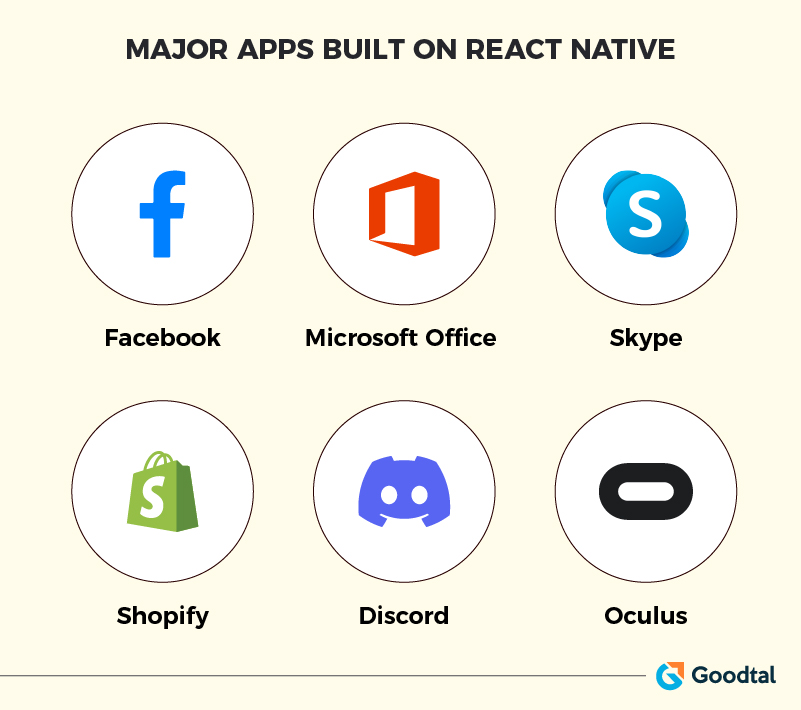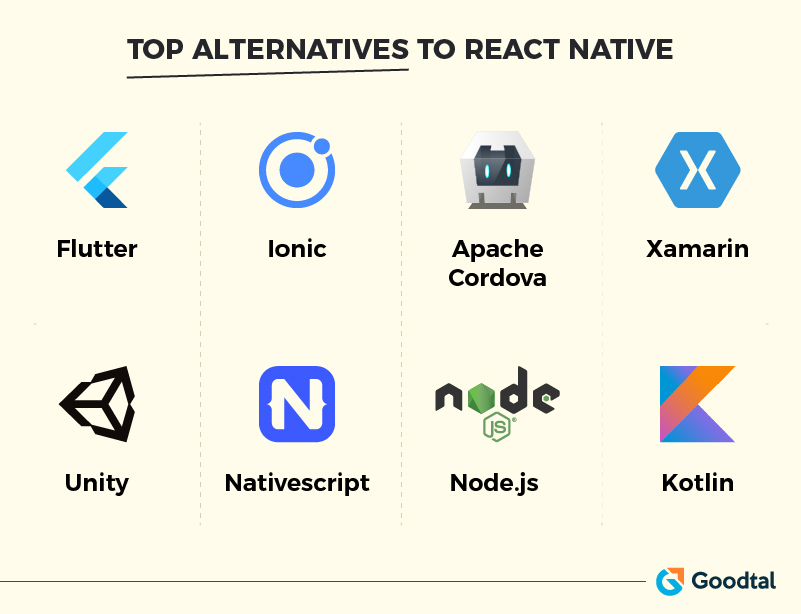
React Native is a well-known name in the world of app developers. It is one of the most robust app development frameworks developed by Meta. When you compare it with other leading frameworks, it is comparatively new but not inferior to any.
React Native boasts a massive community of reliable React Native app developers who can help create robust and unique mobile apps in minimal time. It is well-known as an ideal cross-platform app development framework loved by app developers across the globe.
Based on a report by Statista, React Native had been crowned as the second-best cross-platform app development framework, leaving behind the likes of Cordova, Ionic, Xamarin, and many more.
This post will discuss React Native and why it is considered the ideal platform for cross-platform app development. So, let's move forward and check out some features and perks of the React Native app development framework that make it suitable for building cross-platform apps.
A Brief Overview of React Native
React Native, as already mentioned, is a product of Meta, the company behind the social media platform Facebook. It was released in March 2015 and is written in Javascript.
React Native app development framework is ideal for creating applications for various platforms like Android and iOS. The framework also supports application development for Android TV, macOS, tvOS, Windows, the web, and many other platforms.
React Native emerged as a breakthrough platform that could help build native and cross-platform apps using Javascript. Before its launch in 2015, Javascript was limited to creating just web apps.
Earlier, app developers had to develop mobile apps separately for different platforms by writing different codebases. For example, suppose a business wishes to create an app for both iOS and Android. In that case, they must separately write apps in different programming languages, such as Swift or Objective-C for iOS and Kotlin or Java for Android.
React Native is considered to be a successor of React.js. React.js is just a Javascript library that can be used to build UI for web applications. Meanwhile, React Native expands the horizon of Javascript from web apps to building apps for operating systems like iOS and Android.
Let's dive deeper into React Native and learn more about the features that make this app development framework ideal for building cross-platform apps.
Suggested Reading: How Can Mobile Apps Boost the Growth of Local and Small Businesses?
What Makes React Native Ideal for Cross-Platform App Development?
React Native boasts some robust features that bolster its cross-platform app development capabilities, thereby making it the best for creating cross-platform apps. Let's discuss some of these features in more detail and understand why React Native is called the best cross-platform app development framework.

#1 Code Reusability
React Native is known for its fantastic code reusability. It allows developers to reuse up to 85% of the code for writing code for various platforms. Code reusability harbors a wide range of benefits for the software development team. First, code reusability allows businesses to save a lot of time and money.
How?
This feature saves time by allowing developers to use the same code with minor changes for writing other programs, such as for writing cross-platform apps. This way, developers can focus more on creating new and unique features and elements in the program. And, as they say, time is money; hence, saving time saves a lot of work hours, which directly translates into less use of resources and, therefore, money.
#2 Fast Refresh
Fast refresh is the React-Native framework's most productive and efficient feature. This feature allows developers to make quick changes and view their effects within 2-3 seconds. This way, it enables software developers to reduce overall program development time by making rapid changes and seeing their immediate impact.
#3 Access to Native Components
Usually, frameworks or programs written in Javascript render elements using web views. But in stark contrast to the norm, React Native, written in Javascript, renders views using the native components of your device.
For example, React Native's UI component "View," responsible for creating the UI, maps itself to its equivalent view in the device on which the app is running. If it is an iOS device, the "View" component will map itself to iOS's equivalent, "UIView." If it is an Android device, it will map to "android.view". By doing this, it creates a UI interface that feels and seems almost native.
Similar to the <view>, other React Native core components responsible for making the apps feel native are <Text>, <Image>, <ScrollView>, etc.
#4 Faster Performance
React Native, compared to other cross-platform app development frameworks such as Cordova, offers faster performance. React Native provides a speed of up to 60 frames per second. This speed, along with React Native's native rendering ability, makes React Native cross-platform apps look and feel almost native.
#5 Time and Cost-Effective
As we know, developing native apps for every platform is quite time-consuming and expensive. But by using React Native, a cross-platform development framework, we can save considerable time and money without compromising user experience.
As mentioned before, a lot of app development time can be saved with code reusability, and so the cost. Also, React Native is an open-source framework and, hence, free to use.
The most important way it helps save money and time is by providing businesses with a means to get native-like apps built for multiple platforms in almost half the time and cost that they might have to spend building native apps for multiple platforms.
#6 Thorough Documentation and Community Support
React Native is one of the most trusted and oldest software development frameworks. It is known for its thorough documentation that it makes accessible to the people. Another essential advantage of investing in React Native is the community support from highly experienced software developers and other experts.
With the availability of in-depth documentation and community support, it becomes much easier for new developers and individuals looking forward to learning to use this framework.
#7 Third-Party Plugins
React Native provides a range of third-party plugins for developers to add more features to their mobile apps without building them from scratch.
React Native app development framework brings many in-house features that help app developers access the host devices' native features such as camera, GPS, storage, and more. But while building a highly complicated app with a large number of sophisticated features, the in-house features might not be enough; hence, one can choose from the rich library of third-party plugins brought by the framework.
Some of the third-party libraries provided by React Native are as follows:
- AntDesign
- FontAwesome
- Foundation
- Ionicons
- MaterialIcons
- Zocial
#8 Easy-To-Use
React Native has a relatively easy-to-use interface, which makes it more accessible for new learners. The simple user interface is accompanied by tutorials at every step, which makes learning much easier and quicker for new developers. In addition, the in-depth documentation provided by the framework and community support are also crucial factors contributing to the growth of young developers.
Top Apps Built on React Native

Top Alternatives to React Native
Aside from React Native, there are many other cross-platform app development tools that you might choose. First comes Flutter, the most used cross-platform app development framework in the world, slightly ahead of the React Native Framework. Other tools include the likes of Ionic, Phone Gap (Adobe Cordova), Xamarin, Node.js, and many more.

Suggested Reading: How to Develop a Successful Mobile App?
Summing Up
React Native is a compelling app development framework that can build Native and cross-platform apps. However, it is most popular among mobile app developers as an ideal cross-platform app development platform.
A product of Meta, it boasts a wide range of features such as up to 85% code reusability, native-like cross-platform apps, fast refresh, native components, and many more such elements. Some of these features help app developers build mobile apps in minimal time by reducing their workload and by offering them tools that will speed up the app development process.
We discussed some of the critical features of React Native in this blog that might help people looking for cross-platform app development understand why they should invest in this framework. We also discussed some major apps made using the framework, such as Facebook, Instagram, Baidu, Tesla app, and many more.
Summing up, we can say that React Native is a powerful platform trusted by industry giants across the globe and supported by a large community of React Native developers.
